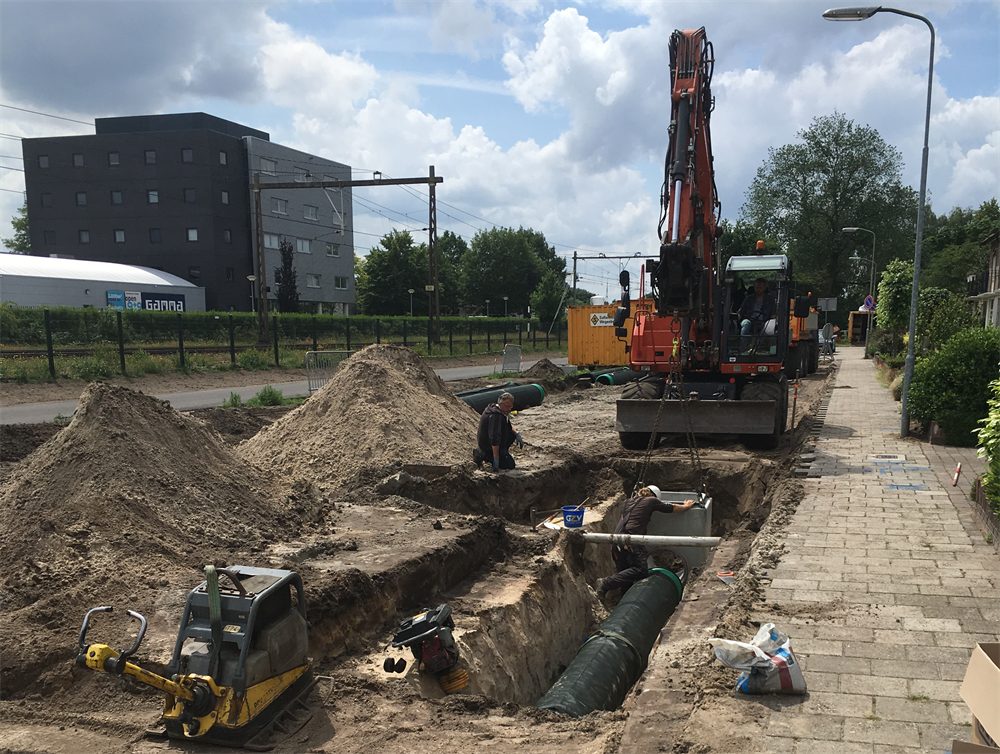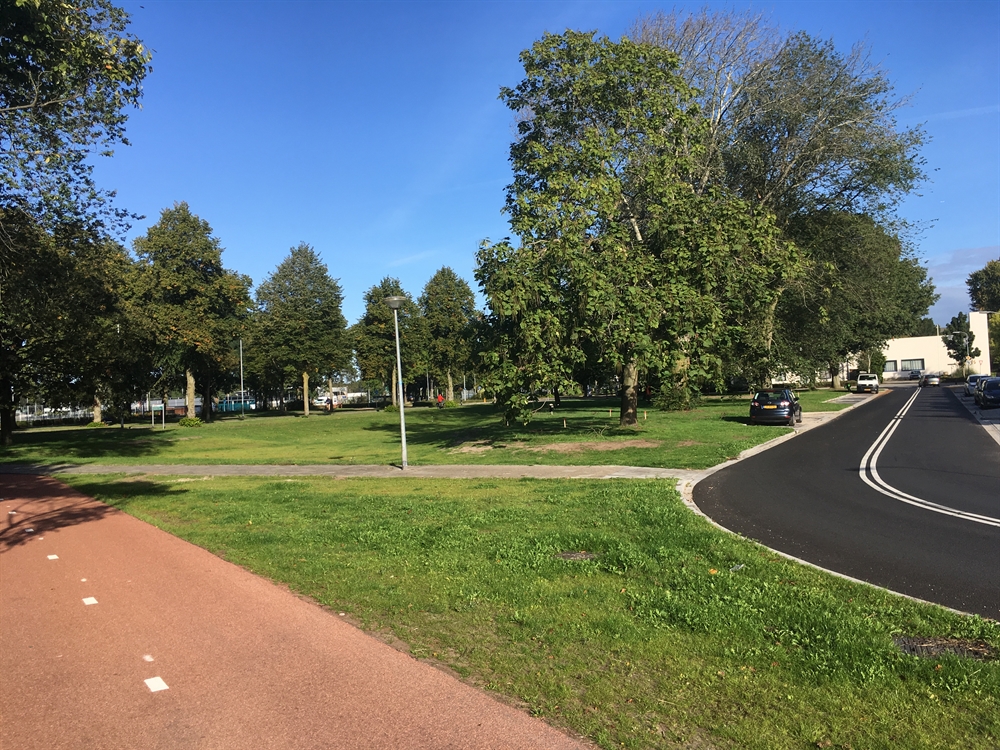More room for water in Stadsdennen district in Harderwijk
In the Stadsdennen district, the municipality of Harderwijk has constructed an infiltration sewer system. This is a separate rainwater sewer, which allows the water slowly to infiltrate into the soil, thus preventing rainwater from ending up in the wastewater sewer. In addition, an infiltration sewer utilises the soil’s sponge effect. Via the infiltration sewer, water drains into the soil, thus extending its retention in the area. This enhances the soil’s capacity to withstand prolonged drought. Wadis have also been constructed in this neighbourhood, which temporarily collect excess rainwater and thus prevent waterlogging. The water collected in the wadis will also slowly drain into the soil.
What was the reason for this measure?
Insufficient parking facilities and an unsafe traffic situation prompted renovation of the area. The municipality requested residents to contribute ideas on the re-design of the streets. At the same time, the municipality intended to improve the sewer system and disconnect downspouts in order to prevent waterlogging. With a view to the large infiltration capacity of the local soil, the municipality has opted for an infiltration sewer rather than a rainwater sewer. Rainwater will now drain into the soil rather than being drained into a ditch or pond.

What is the municipality aiming to achieve?
With this project, the Stadsdennen district will be separating rainwater from less clean household wastewater. The infiltration sewer will ensure that rainwater is retained locally. This will make the most of the sponge effect of the soil, which can help prevent dehydration of the soil during periods of drought. In addition, separating rainwater from wastewater is a more sustainable option: it cuts down the water volumes to be purified by wastewater purification plants, enabling them to operate more efficiently. This saves both energy and costs. Thus, the project fosters the climate resilience and sustainability of the town of Harderwijk.
How has the municipality collaborated with local residents?
In the project team, local residents and municipal consultants have reflected on the new design of the streets. Street safety was the primary concern of the residents. Furthermore, in the early stage of the project, they could opt for disconnecting their roof downspouts and part of their front gardens from the sewer system. Thus, rainwater falling into their garden would also end up in the new infiltration system. On account of the additional work required in the front gardens, the residents have chosen to refrain from disconnecting their downspouts and gardens. Consequently, only the rainwater running off via the street surface will end up in the infiltration sewer.
Any lessons to be learned or special circumstances?
It is very difficult to meet everyone’s wishes when re-designing a street, and to alert residents to the importance of climate adaptation. In many cases, residents want a safe street with parking facilities, preferably in front of their houses. If a street is not affected by waterlogging, its residents will fail to see the advantage of disconnecting rainwater downspouts. Yet, when renovating streets, the municipality of Harderwijk increasingly seeks to accommodate both the wishes of residents and climate adaptation measures.
Contact person
Dyanne van Summeren
Gemeente Harderwijk
d.vansummeren@harderwijk.nl

